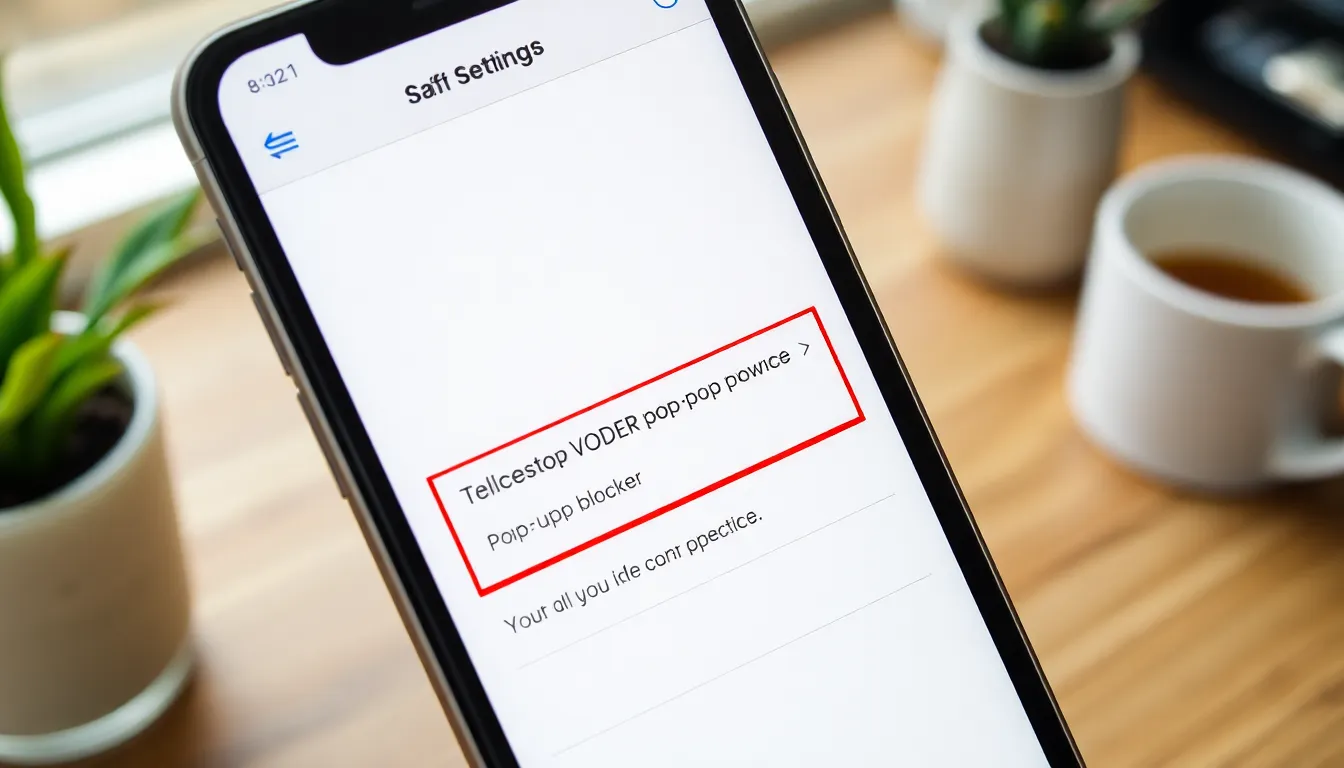Table of Contents
TogglePop-up blockers on iPhones can feel like the annoying bouncer at a club, keeping out all the fun. While they’re designed to protect users from unwanted distractions, sometimes they block the very content you want to see. Ever tried to access a special deal or a fun quiz only to be met with a blank screen? Frustrating, right?
Don’t worry, it’s not rocket science to turn off that pesky pop-up blocker. With just a few taps, users can reclaim their browsing experience and say goodbye to missed opportunities. So if you’re ready to let those pop-ups back in—like old friends crashing your party—here’s how to do it without breaking a sweat.
Understanding Pop-Up Blockers
Pop-up blockers serve as tools designed to enhance the browsing experience by preventing unwanted advertisements and interruptions. Users on iPhones often benefit from these features, but they may also encounter limitations when seeking specific content.
What Is a Pop-Up Blocker?
A pop-up blocker identifies and stops pop-up windows that appear during web navigation. These blockers operate in browsers or as independent applications. They primarily target unsolicited ads and offers that can distract users from their browsing goals. Many modern browsers, including Safari, come with built-in pop-up blockers that automatically filter out unwanted content. Users may find these blockers useful for maintaining a cleaner, more focused browsing experience.
How Does It Affect Browsing?
Pop-up blockers influence browsing by streamlining web pages and limiting unnecessary distractions. This functionality improves page load speeds and enhances user engagement with relevant content. However, some desirable pop-ups, like essential notifications or login prompts, may also get blocked. Users could miss out on important offers, forms, or interactive quizzes. Balancing the advantages and disadvantages of pop-up blockers is crucial for a satisfying browsing experience on an iPhone. Disabling the blocker allows access to a broader range of content while re-enabling it helps maintain a clutter-free interface.
How to Stop Pop-Up Blocker on iPhone

Disabling the pop-up blocker on an iPhone enhances web browsing by allowing access to useful content. The following sections describe how to adjust settings in Safari and other browsers.
Disabling Pop-Up Blocker in Safari
To disable the pop-up blocker in Safari, navigate to Settings. From there, select Safari, and scroll down to find the option labeled Block Pop-ups. Toggle the switch to the off position. This action allows every pop-up to load while browsing, improving access to sites that use pop-ups for notifications and interactive features. Consider re-evaluating this setting after visiting websites that require pop-ups for optimal functionality.
Adjusting Settings in Other Browsers
Other browsers on iPhones, such as Chrome or Firefox, have their own methods for disabling pop-up blockers. For Chrome, open the app, tap the three dots in the corner, select Settings, and look for Site Settings. Find Pop-ups and redirects and turn the option on. In Firefox, open the app, tap the menu button, select Settings, and choose Privacy. Locate the Block pop-up windows option and disable it. Adjusting these settings can significantly improve the browsing experience on websites requiring pop-up interactions.
Tips for Managing Pop-Ups
Managing pop-ups effectively enhances the browsing experience on an iPhone. Users can utilize various techniques to control pop-up settings while maintaining browser efficiency.
Whitelisting Trusted Websites
Whitelisting allows specific websites to bypass pop-up blockers. Users can prioritize sites they trust, ensuring uninterrupted access. To whitelist, navigate to the browser settings and add preferred websites to the allowed list. For Safari, users go into Settings, select Safari, then scroll to the “Pop-up Blocker” section and manage exceptions. Trusted sites like banking or shopping platforms often require pop-ups for crucial functions. By whitelisting, browsing becomes smoother without sacrificing security.
Best Practices for Safe Browsing
Practicing safe browsing habits protects users while allowing pop-ups when necessary. Always verify site legitimacy before engaging with pop-ups. Checking for HTTPS in the URL signifies a secure connection. Avoid clicking on pop-ups that seem suspicious or unsolicited. Keeping Safari and other browsers updated ensures the latest security features. Additionally, enabling private browsing when accessing unfamiliar sites can safeguard personal data, limiting pop-ups effectively. Following these guidelines promotes a secure online experience while allowing essential interactions.
Troubleshooting Common Issues
Pop-ups may still not appear even after disabling the blocker. Users should try refreshing the webpage to see if that resolves the issue. Clearing the browser cache can also help. Some browsers might need a restart, so closing and reopening the app is a good idea. If the problem persists, checking for any conflicts with other apps or settings is essential.
What to Do If Pop-Ups Still Don’t Appear
When pop-ups remain elusive, confirm that the browser’s settings allow them. Navigate to the browser’s settings and look for any additional options that might affect pop-up behavior. Sometimes, third-party security apps may interfere, so disabling them temporarily can help identify the issue. Testing the website in a different browser can also provide clarity on whether the problem is browser-specific.
Resetting Browser Settings
Resetting browser settings can restore functionality for pop-ups. Each browser has a different process for this action. For Safari, going to Settings, selecting Safari, and choosing “Clear History and Website Data” can reset the settings. In Chrome, accessing Settings, scrolling to “Advanced,” and selecting “Reset Settings” accomplishes the same. Firefox users might click on “Help,” then “Troubleshooting Information,” and choose “Refresh Firefox.” This process often resolves lingering issues and encourages pop-ups to display as intended.
Disabling the pop-up blocker on an iPhone can significantly enhance the browsing experience. By following the straightforward steps outlined in the article, users can access valuable content without frustration.
Balancing the need for pop-ups with the desire for a clutter-free interface is essential. Whitelisting trusted sites and practicing safe browsing habits can further improve online interactions.
With these tips in mind, users can navigate their preferred websites with ease while ensuring they remain protected from unwanted interruptions. Embracing this approach leads to a more enjoyable and efficient browsing experience on any iPhone.





